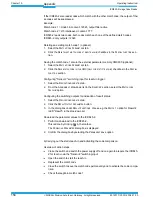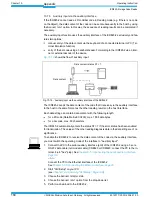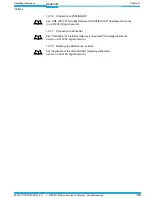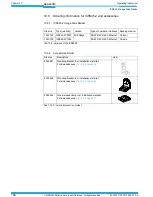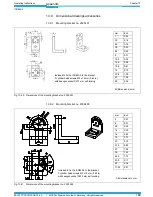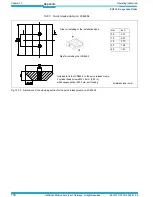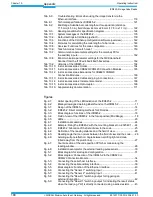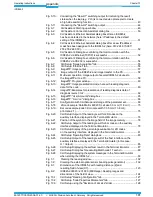
Chapter 10
Operating Instructions
ICR845-2 Image Code Reader
172
©
SICK AG · Division Auto Ident · Germany · All rights reserved
8012377/ 0000/ 2008-01-30
Appendix
10.11 Glossary
For additional terms, see also Online help "CLV-Setup Help".
1D code (bar code)
Field of parallel, dark bars and light gaps which can be applied to the medium (base) by any
of several marking procedures following a certain specification. A corresponding number
and combination of bars and gaps (elements), which can be read by a machine, result in an
alphanumeric character which can be read by the user. Since all of the encoded informa-
tion, framed by start and stop characters, is available in one dimension and is usually
scanned line-by-line, these bar codes are called linear codes. The various types of bar code
differ in their selection of characters which can be encoded, structure (number of elements
per character, number of charactes, start/stop characters, check character), the informa-
tion density and the print tolerances. The length of the code bars and gaps is irrelevant in
terms of the information content, but is relevant for scanability.
2D code
In a two-dimensional code, the information is arranged more densely, using dark and light
cells (squares) in a matrix. The vertical and horizontal arrangement of the cells is deter-
mined using the data-content specification in reference to the middle and side edge refer-
ence points. For error-correction purposes when reading, a mathematical method provides
the code with a redundancy feature (e.g. error-correction code words for Data Matrix ECC
200). The omnidirectional reading of 2D codes is done by image recording and processing.
Aspect ratio
For bar codes, ratio of the code height (bar length) to the code length (number of charac-
ters). The SMART decoder can read bar codes with extremely small aspect ratios.
Auxiliary input
Special function of the auxiliary interface. Used to enter code data subsequently in order
to complete reading results sent to the host.
Aux interface
Logical auxiliary interface of the ICR845-2 with a fixed data output format. Can be physically
switched to the serial data interface (RS 232) or to the Ethernet interface (port 2111). With
this interface, access to the ICR845-2 for configuration/diagnostics is always possible with
the PC and the CLV-Setup configuration software. Also used to output system and error
messages. Can be assigned various functions.
CAN interface
Physical data interface. Used to establish a quick SICK-specific CAN scanner network with
various functions (e.g. multiplexer, master/slave) or for integration into existing CAN net-
works in accordance with the CANopen protocol. In Remote mode, using the CLV-Setup con-
figuration software, you also can access to the ICR845-2 for configuration/diagnostics via
the CAN interface (network).
CLV-Setup
PC program which runs under Windows 95
TM
/98
TM
, Windows NT4.0
TM
, Windows 2000
TM
and
Windows XP
TM
. Used for offline configuration (adjustment to the reading application at hand)
and the online diagnostics of the ICR845-2. By uploading and downloading, the pa-
rameter set to be processed is exchanged with the ICR845-2.

